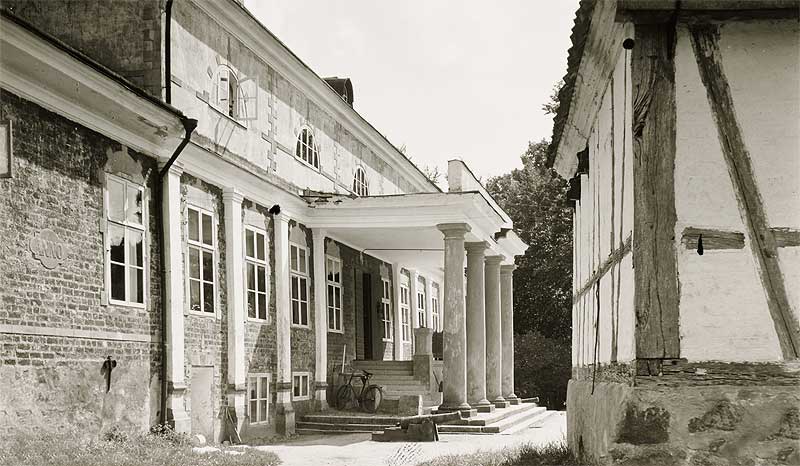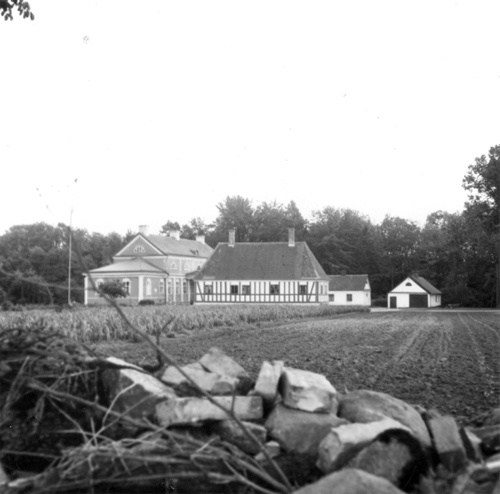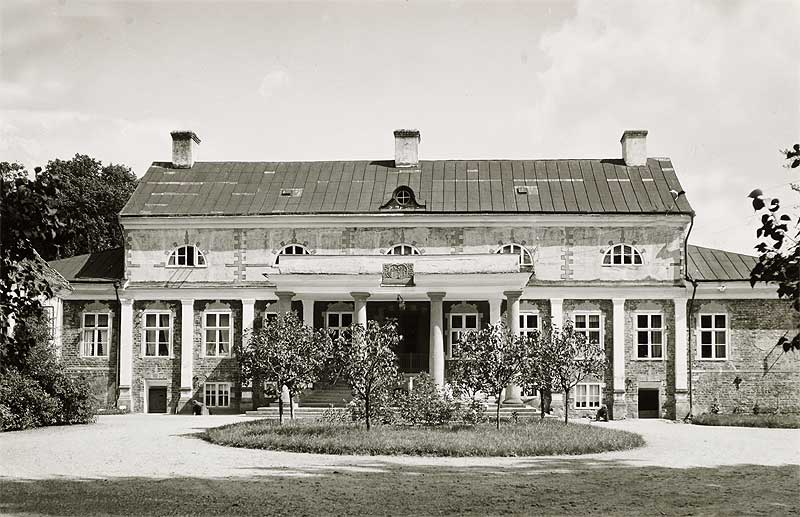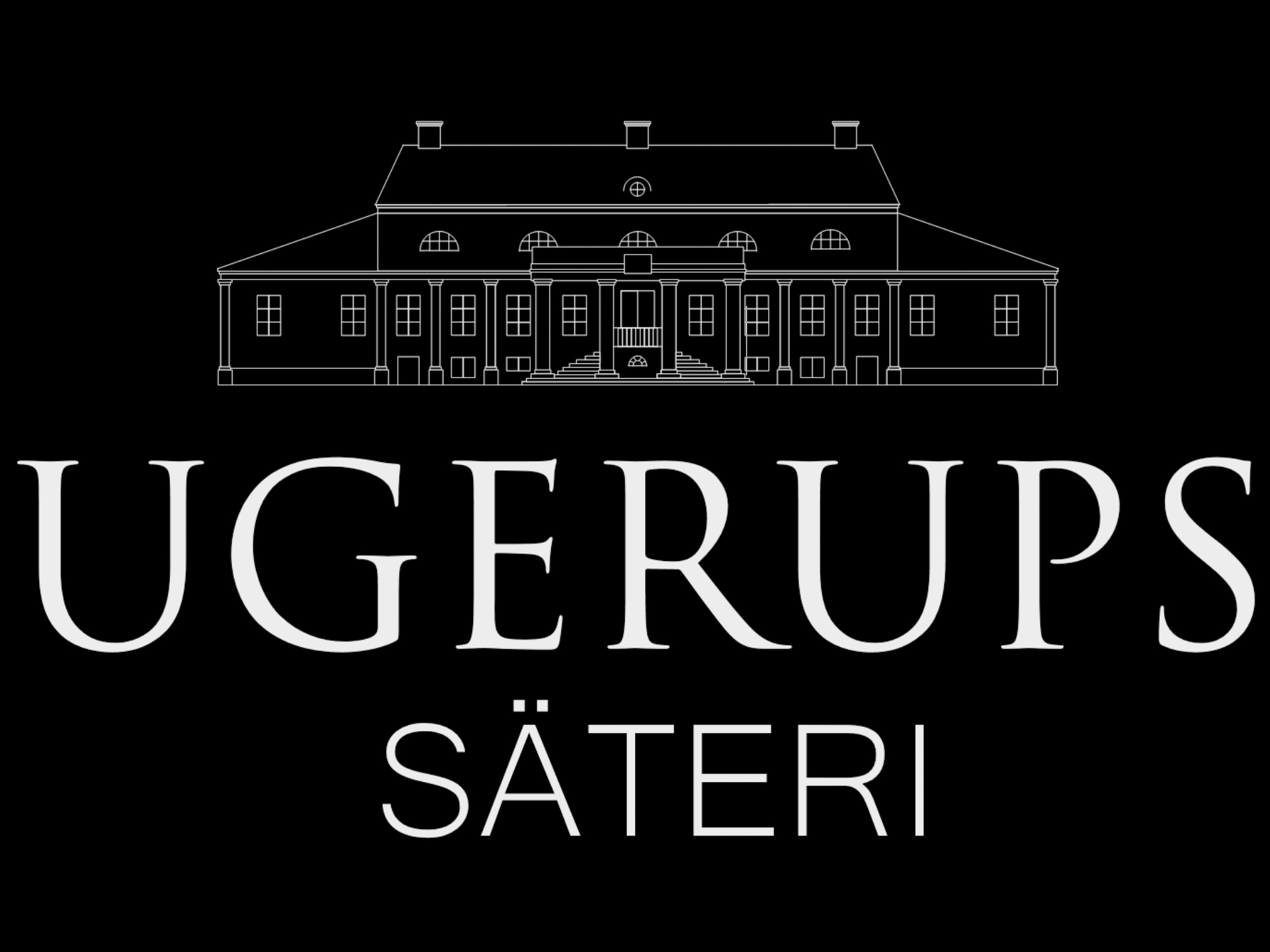THE HISTORY OF UGERUP
Ugerups Säteri, nestled approximately a mile south of Kristianstad, exudes timeless charm with its picturesque manor house gracing the banks of Vramsån. Historical narratives suggest that Ugerup was established as early as the 12th century, if not earlier, adding layers of intrigue to its rich heritage.
THE BEGINNINGS
The name "Ugerup" reveals intriguing layers of meaning. Its suffix, "-rup," suggests a settlement, while another interpretation traces its roots to an ancient Nordic term signifying "curvature." This etymology paints a vivid picture of Ugerup as a settlement nestled at the bend of a river, a fitting description given its proximity to the flowing waters of the Vramsån. Although the precise origins of Ugerup remain shrouded in mystery, historical figures like Arild Urup, born in 1528 and passing away in 1587, are intertwined with its narrative. As a notable ruler of Ugerup, Urup's legacy adds a compelling dimension to the history of this enchanting locale.
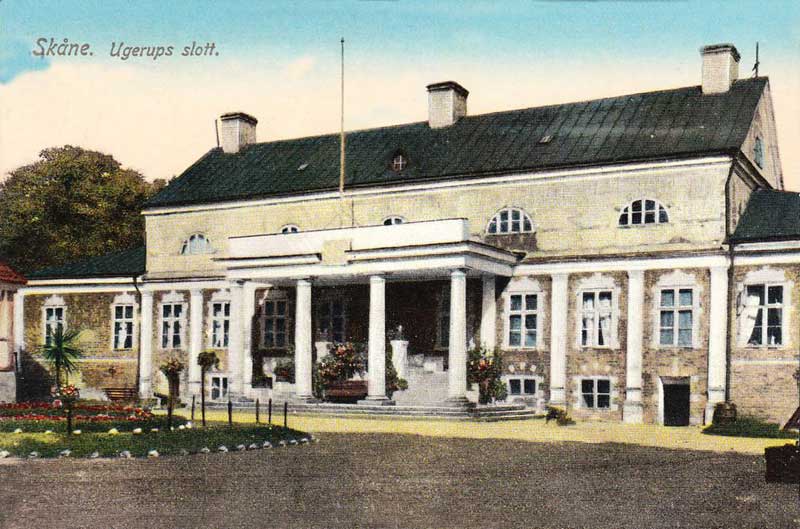
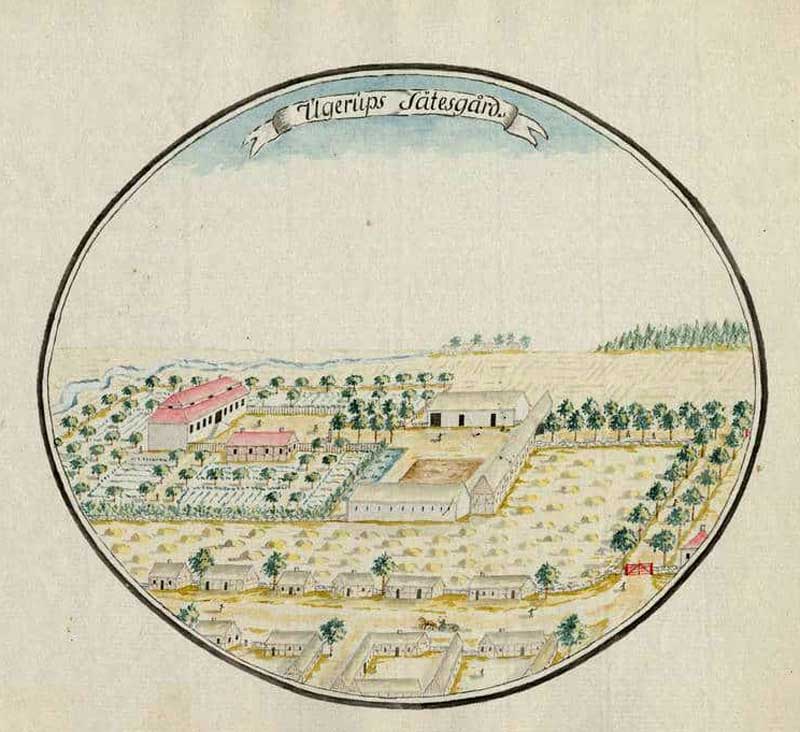
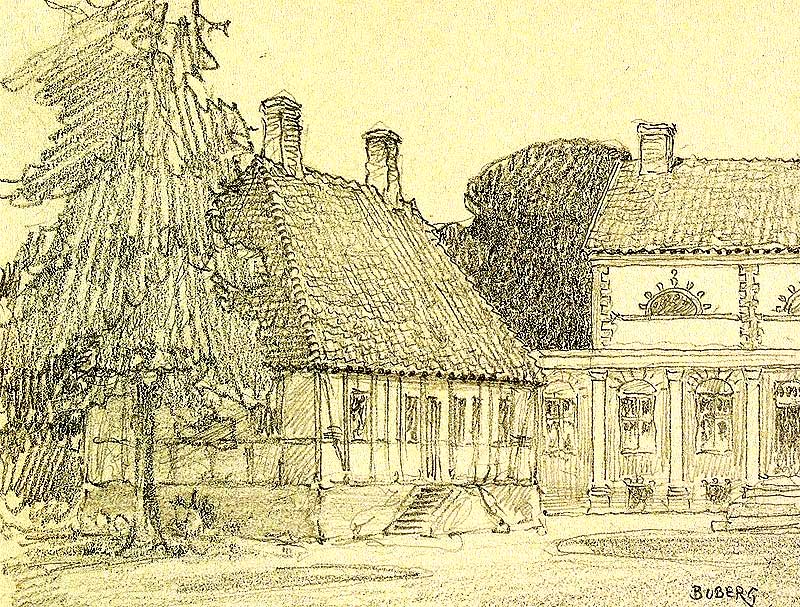
THE OLD UGERUP
The grandeur of Ugerups Säteri is epitomized by its imposing manor house, but this architectural centerpiece has not always held that role. In centuries past, a smaller yet dignified half-timbered house stood as the focal point, dating back to the 16th century. Erected around 1500, this structure was encircled by a protective moat, its entrance facing the north side. Tragically, the remnants of this historic edifice were engulfed in a devastating fire during the 1970s, leaving behind only memories of its once-stately presence.
The images below showcase the half-timbered house, a testament to the architectural heritage of Ugerups Säteri.
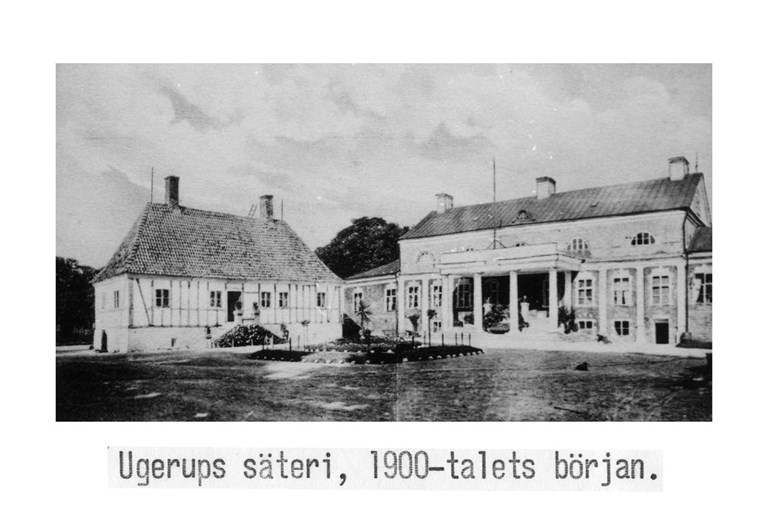
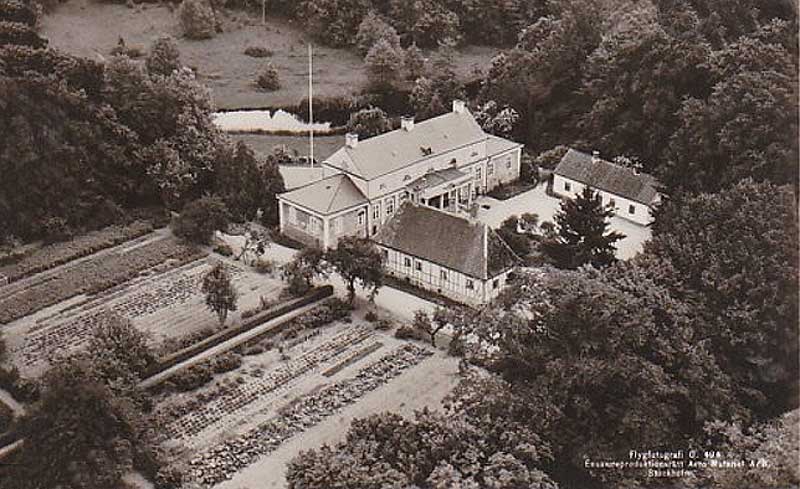
THE 17TH AND 18TH CENTRURIES
In the 17th century, Denmark's dominance extended over much of the Nordic region, with Copenhagen serving as both capital and royal seat. However, for the residents of Ugerup, the identity of their estate's owner held paramount importance. Enjoying noble protection, villagers were exempt from taxes to the king, instead paying dues to Ugerup's landlord, securing their allegiance and safety.
As the early 18th century dawned, a significant Nordic conflict unfolded, pitting Denmark against adversaries like Russia and Poland. Margareta von Ascheberg, widow of Kjeld Christoffer Barnekow and Ugerup's landlord, navigated the tumult of war. Amidst this turmoil, she oversaw the construction of a new manor house, necessitating the partial demolition of the old structure, leaving only its northern wing intact. Although Margareta resided in Vittskövle, her daughter Brita Barnekow and son-in-law Johan August Meijerfeldt were compelled to take up residence in the newly erected manor. Brita's enduring legacy is commemorated in the facade of the warehouse she commissioned in 1764, serving as a poignant reminder of her presence and influence.
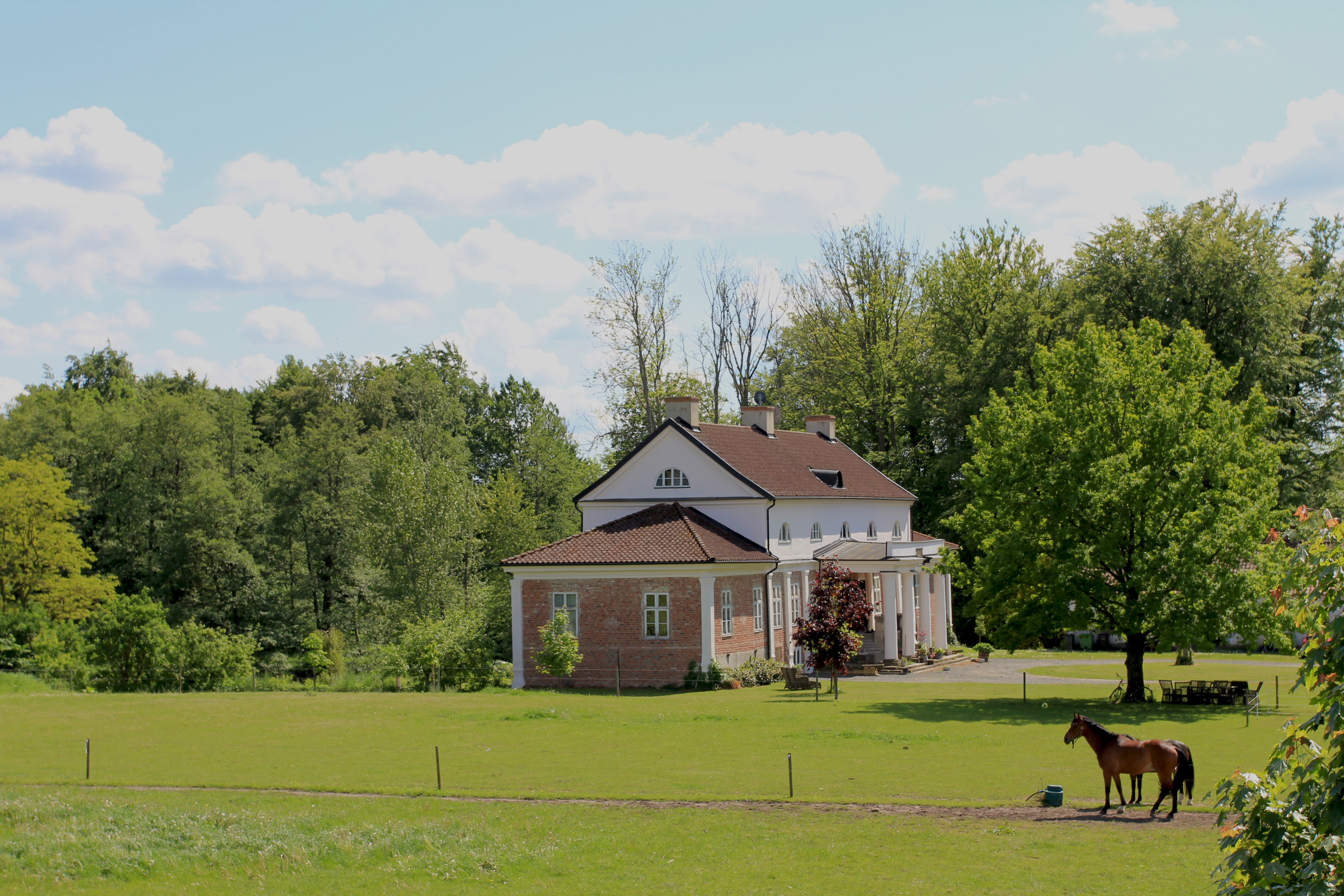
THE 19TH CENTURY
Throughout the generations, the Barnekow family maintained their stewardship over Ugerup, although they resided not within its own confines, but within the grandeur of Vittskövle Castle. It was during the 19th century that they diversified their agricultural pursuits, turning their attention to the cultivation of potatoes. The fertile fields of Ugerup proved particularly well-suited to this endeavor.
Yet, economic pressures eventually compelled Christian Barnekow to part ways with Vittskövle Castle in 1826. This pivotal event marked a return to Ugerup's estate as the primary residence for the Barnekow family, cementing its status as a permanent homestead once more.
The images below showcase Vittskövle Castle, located in the village of Vittskövle.

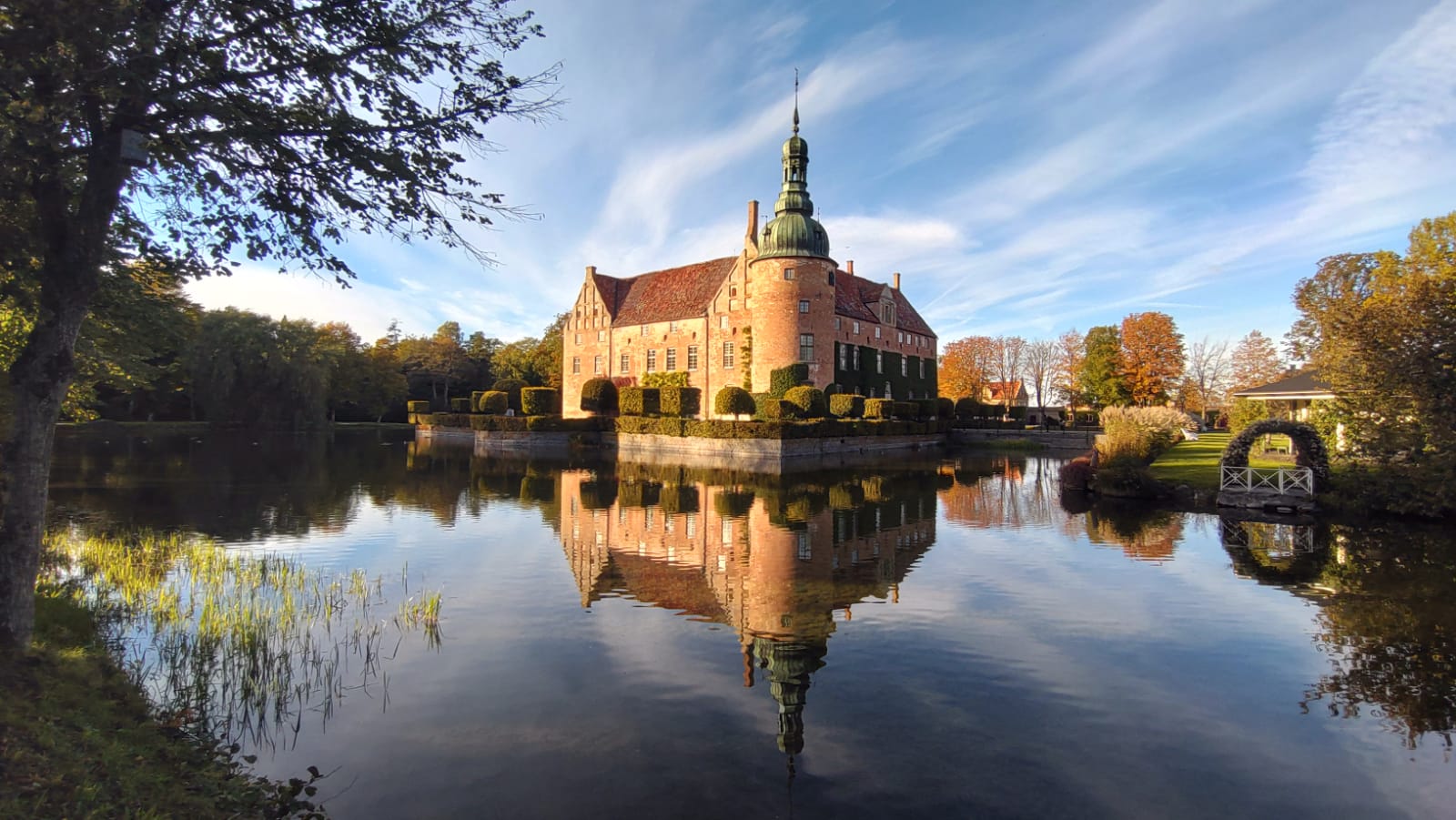
A NEW ERA
The 1850s ushered in a period of significant transformation for Ugerup. The estate changed hands, passing into the ownership of Count Reventlow in Lolland, Denmark. Under his stewardship, the land underwent a redistribution, with each farm allocated only a limited portion, leading to the dissolution of the city community. Consequently, the old village that once thrived in Ugerup vanished, leaving behind no discernible traces of its former existence. Today, only echoes of its past remain, shrouded in the mists of time.
